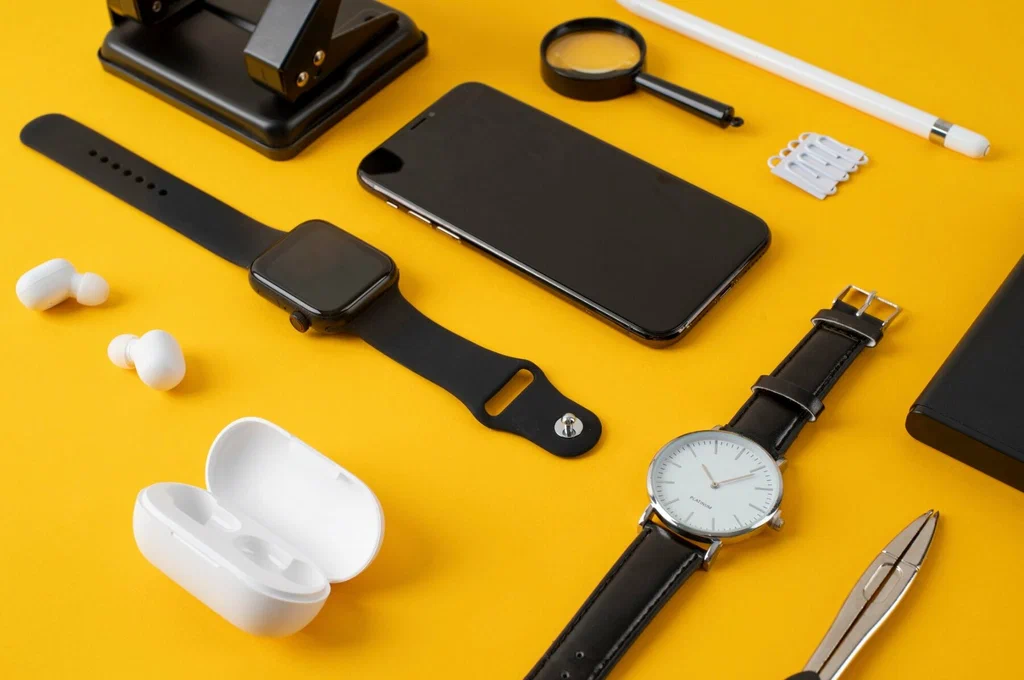Why People Are Reconsidering Smartwatches
Let’s be real—smartwatches aren’t cheap. Many top models cost nearly as much as a mid-range smartphone. And for some users, the novelty wears off. If you're only checking the time and occasionally counting steps, is the investment still justified?
That’s the question more people are asking, especially as alternative wearables (like smart rings and fitness bands) offer niche benefits at lower prices. But smartwatches have also evolved—becoming more advanced, more health-focused, and even more stylish.
Let’s explore whether they still earn a spot on your wrist.
What Smartwatches in 2025 Can Actually Do
Modern smartwatches are no longer just wrist-mounted notification centers. Today’s top models offer:
⌚ Advanced Health Tracking
-
24/7 heart rate and ECG monitoring
-
Blood oxygen and respiratory rate tracking
-
Sleep cycle analysis with personalized suggestions
-
Skin temperature and menstrual cycle prediction
-
Fall detection and emergency SOS alerts
Some models even offer AI-powered health summaries or alerts when your metrics signal early signs of illness or stress.
🧠 Smarter Fitness and Coaching
-
Auto-recognition for dozens of workouts (from HIIT to yoga)
-
Personalized workout recommendations based on past performance
-
Built-in GPS with route tracking
-
Recovery and readiness scores (based on HRV and sleep)
-
On-screen guided workouts and breathing exercises
📱 Better Everyday Convenience
-
Reply to texts and emails
-
Take phone calls via Bluetooth or LTE
-
Use maps, timers, alarms, and voice assistants
-
Mobile payments via NFC
-
Store and stream music and podcasts
-
Control smart home devices from your wrist
All in a device that weighs about as much as a pack of gum.
Who Should Still Consider a Smartwatch in 2025?
Smartwatches aren’t for everyone. But for certain lifestyles, they’re a valuable companion.
🏃 1. Fitness-Focused Users
If you’re serious about training—or even just committed to daily movement—a smartwatch gives better data than a phone or basic tracker. Think VO2 max estimates, running dynamics, and real-time heart zones. Brands like Garmin and Apple are leading the way here.
👩⚕️ 2. Health-Conscious Individuals
If you’re managing a health condition, monitoring stress, or tracking sleep for recovery, smartwatches now offer medical-grade sensors and insights. Some models even help spot irregular heart rhythms, track medication reminders, or alert you to abnormal vitals.
🚶♂️ 3. Busy Professionals
Need to stay connected without constantly grabbing your phone? Smartwatches offer a filtered, less distracting way to stay on top of calls, messages, and calendar events—great for meetings, travel, or on-the-go schedules.
🎧 4. Media & Music Lovers
Going for a run without your phone? Many smartwatches now let you download music or stream over LTE, paired with Bluetooth earbuds. No more stuffing your phone in your pocket for a 5K.
Smartwatch Trends to Watch in 2025
The category is still evolving. Some of the biggest trends include:
🔋 Battery Life Breakthroughs
Earlier models struggled with daily charging. In 2025, some watches now last up to 10 days on a single charge (like the Fitbit Sense 3 or Garmin Venu 3), with fast charging that gives a day’s use in 10 minutes.
📡 Standalone Connectivity
With built-in LTE or eSIM, some watches can function fully without a phone nearby—perfect for minimalist users.
💍 Competition from Smart Rings
Smart rings like Oura or Ultrahuman offer similar health data in a more discreet package. But they lack screens, GPS, and most smartwatch apps—so it's more a complement than a full replacement.
🌍 More Eco-Friendly Designs
Many new models use recycled aluminum, vegan leather bands, and packaging with reduced plastic—ideal for sustainability-minded shoppers.
Downsides to Consider
Smartwatches are powerful, but not perfect. Here are a few limitations:
-
Price: Most full-featured models range from $250–$600+
-
Screen Time: Some users feel more distracted wearing one
-
Battery Anxiety: High-use features (like GPS or LTE) drain battery fast
-
App Clutter: Not every app translates well to a 1.5-inch screen
If you just want to track steps and time, a basic fitness tracker might make more sense—and cost less.
Popular Smartwatches Worth a Look in 2025
Here are some of the best-rated options by category:
| Model | Best For | Key Features |
|---|---|---|
| Apple Watch Series 10 | iPhone users, all-rounder | Double Tap gestures, Siri on-device, advanced health sensors |
| Garmin Venu 3 | Athletes & data lovers | Long battery life, deep fitness metrics, OLED display |
| Samsung Galaxy Watch 7 | Android users | Great fitness tools, sleek design, improved battery |
| Fitbit Sense 3 | Health-first users | Stress management, sleep tools, affordability |
| Google Pixel Watch 2 | Google ecosystem fans | Fitbit integration, new heart sensor, sleek UI |
Final Thoughts: Are Smartwatches Still Worth It?
In 2025, smartwatches have matured beyond being tech toys. For the right user, they’re powerful tools that offer insight, convenience, and motivation—all in one sleek package.









